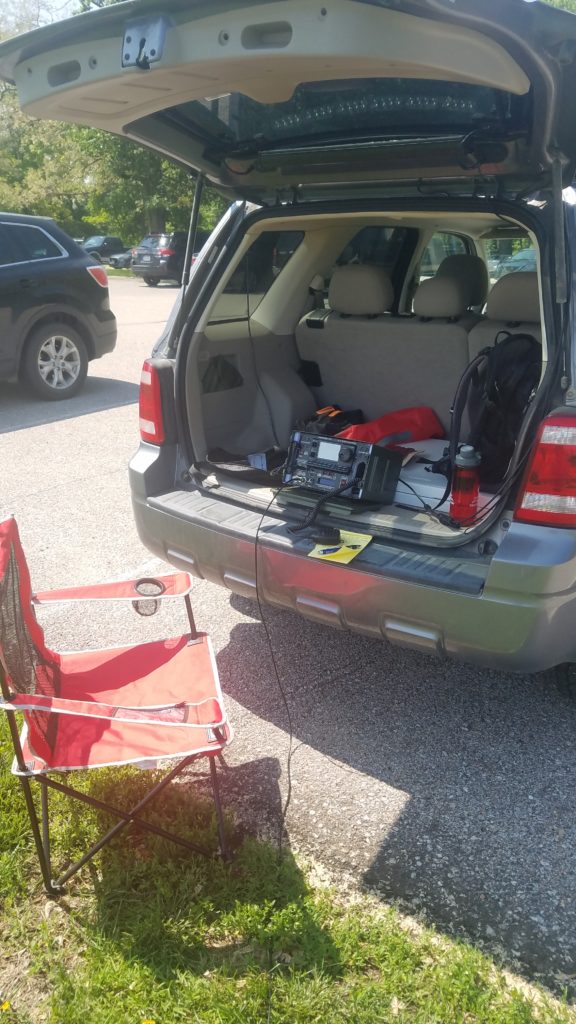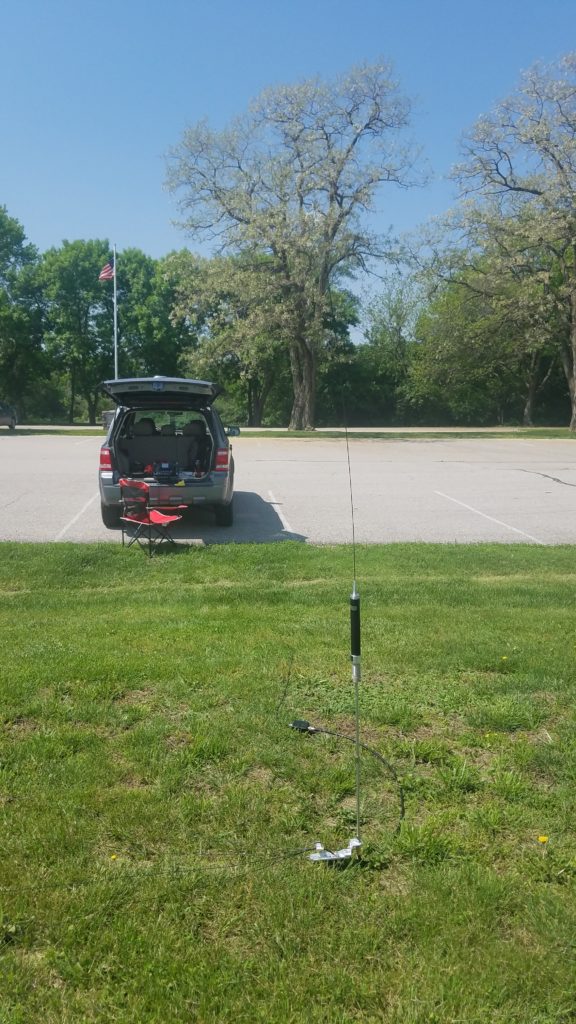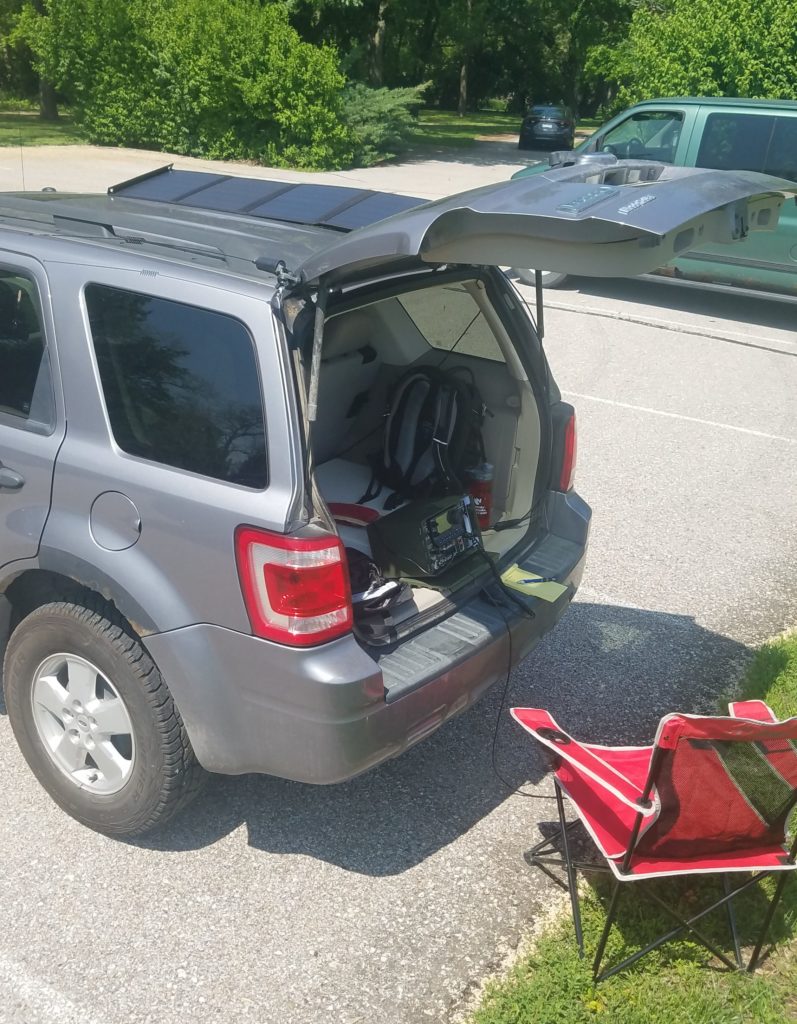Since amateur radio and being outdoors are among the activities I enjoy the most, it is natural that the concept of field communications is very appealing to me. Add to this my interest in emergency communications and the volunteer work that I am involved in related to that – and there will be no wonder that I was looking at people going on a Field Day outing or taking their radio on a camping trip with envy and admiration.
Ever since I became active on the air, the thought of having a portable radio station has never left my mind. One day, I saw a post on QRZ that described a local contest of ham radio go-boxes organized by a local club in Hawaii. That’s where I first saw the Commander power system from Hardened Power Systems, and I absolutely loved their concept. After a week or so of thorough research, I decided to order this unit for myself.

K-2615 Fort Atkinson State Historical Park.
Commander is a “turnkey solutions”, as they describe it on their website, and it is specifically designed for a certain radio. At the time, two version of the system were offered – one for Yaesu FT-857 and FT-891, and the other for Icom IC-7100. I am an Icom guy, so it was relatively easy for me to make a choice – and I never looked back: a large touch screen, an easy and intuitive menu, and the band/SWR sweep function all come very handy during field operations. Thus, I became a happy owner of the Commander 7100. The detailed description of the unit, together with its pros and cons, goes beyond the scope of this post, and will be addressed later in a detailed review.
When it came to choosing the antenna, my main requirements were: lightweight, deployable in a short time (preferably 10 minutes or less), compact, tunable (as IC-7100 does not have a tuner, and I did not want to add one – as it defeated the purpose of having a Commander go-box). Thus, I excluded all sorts of random and longwires, as well as dipoles (as they require support that can hardly be compact and lightweight). Among the loaded verticals, I chose the SuperAntenna MP1DXR: it weighs less than 4 pounds packed in a 13″ x 9″ bag, is self-supporting and can be mounted either on the ground using the spike, or to the table or mast/pipe using mounting hardware provided in the package. It deploys in less than 5 minutes, and can be easily tuned using the provided reference ruler (the SWR sweep function of IC-7100 makes tuning a breeze). According to the tech support, the antenna is essentially weatherproof (it can be even washed in warm water, then dried and reassembled) – which is ideal for outdoors applications. The only weakness of this antenna is the need for a radial system – however, a fast-release connection and provided radial kits make it reasonably easy as well.

Station deployed in the back of the car. 
SuperAntenna MP1DXR mounted on the ground spike, radials extend to the left.
And of course, since we are talking field communications – we should think about powering the station. The Commander has a generous 22 Ah battery that will support operation at full power for at least 2-3 hours – however, during longer trips or )hopefully unlikely) emergency situations the need may be to operate longer than that, without access to commercial power. Thankfully, Commander comes with a solar charge controller that accepts any solar panel with output voltage of 12-20 V, and power of up to 60 W. Thus, to complete my setup, I added a Rockpals 60 W solar panel – and it performed great so far. In addition to the main cable that plugs into the Commander’s solar charger, it has 3 USB ports. It folds into a nice compact case, and does not add a lot of weight to the whole setup.

After receiving my Commander in late May (the antenna and solar panel came much faster from Amazon – but the Commander is made to order, and the usual wait time is ~3 weeks), I decided to take a ride to one of the parks in the neighborhood for my first Parks on the Air activation. Needless to say I was super-excited! It was also a dry-run before I took my portable station on a week-long camping trip to South Dakota, so I couldn’t wait to see how it performed.
When I thought about which park should I activate, I discovered that there are quite a few parks within reasonable driving distance that have never been activated before. Thus, I chose one of the closest – Fort Atkinson State Historical Park (POTA reference number K-2615) in Fort Calhoun, NE. At the destination, I parked in the south parking lot, deployed the antenna and set up the radio in the back of my car. I had my first contact in the log shortly after I started calling CQ – and overall was impressed by the performance of my station, given that the bands are far from their best conditions. I scored 14 contacts on 20 meters, including three park-to-park contacts, in just 20 minutes! At that time, an ice-cream truck parked right by me, and the RFI from its generator rendered my station deaf. However, I was already so thrilled by the success that I had no regret about that. I also had a nice chat with two gentlemen who came to ask what I was doing, and one of them told me that he recently passed his Technician test. So great to see new hams joining the hobby!
This first success definitely inspired me, and since then I took my station to 11 parks in Nebraska and South Dakota, making overall 300+ contacts on 10, 20 and 40 meters. And it’s not the end of the season yet – in fact, I plan the next activation run this coming weekend. Every day can be a field day!